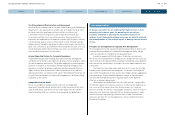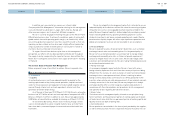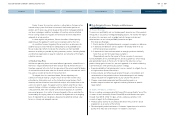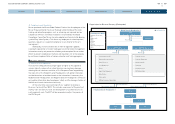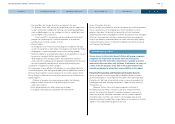Nissan 2013 Annual Report Download - page 45
Download and view the complete annual report
Please find page 45 of the 2013 Nissan annual report below. You can navigate through the pages in the report by either clicking on the pages listed below, or by using the keyword search tool below to find specific information within the annual report.
4) Supply Chain Continuity
Control was enhanced as follows to prepare for increased supplier risk.
l Response to suppliers’ financial risk
1. Risk assessment (annual)
n Work with Alliance partner Renault to conduct financial assessments of
suppliers based on the latest data on a global basis
2. Prompt decision on risk avoidance
n Prompt decision-making by a cross-functional committee based on risk
assessment findings
n Thoroughgoing monthly management of risks for each supplier and
anticipated expenditures
n Steady implementation of the above operational process
l Response to suppliers’ disaster risk
1. Ensuring business continuity
In fiscal 2012, major efforts to cope with disaster risk in the supply chain that
were continued from the preceding year included:
n Promoting visualization of the supply chain (enabling smooth initial
response by ascertaining in advance the links between parts and the
vehicles produced, as well as the attendant risks, through research of
supply chain conditions)
n Following up on the BCP established for suppliers
n Implementing checks of suppliers’ initial response process (making
revisions through coordination among production, development and
purchasing divisions)
2. BCPs for overseas operations
In fiscal 2012, Nissan introduced measures taken in Japan to overseas
operations besides Thailand (North America, Europe, China and India) and
started to work on supply chain BCPs for those regions.
5) Risk Financing and Loss Prevention
1. Global Insurance Management Policy
Nissan manages hazard risk on a global basis with risk financing techniques
that combine self-retained risk with external risk transfer via insurance.
In order to minimize the cost of risk, Nissan adheres to the following
global insurance management policy. This policy has provided appropriate
coverage for damage resulting from the unpredictable and massive disasters
that the world has seen in recent years.
n Predictable risks with low impact and high frequency
Retained risks up to an acceptable level on a consolidated basis by
the company
n Unpredictable risks with low frequency and high impact or shock value
Risks whose financial impact may exceed the acceptable level of self-
retention are transferred outside the company via insurance
2. Global Insurance Programs
In order to minimize the cost of hazard risks and manage risks occurring
globally and interdependently in a concentrated manner, global insurance
programs have been established for main lines of insurance. The Finance
Department in the Global Headquarters decides insurance conditions and
structures, and negotiates directly with insurance companies for these global
programs. The insurance companies are important strategic partners, and they
are thus decided in consideration of risk spread and financial solvency.
The following risks are covered in this way:
n Property damage and business interruption by accidents
The program covers risks not only for property damage but also for
business interruption and contingent business interruption due to
accidents, taking into consideration the global expansion of the supply
chain for products and parts. Coverage limits are determined based on the
probable maximum loss amount measured by third-party experts.
We achieved further improvement and optimization of insurance
conditions by negotiating with insurance companies together with our
Alliance partner Renault from fiscal 2011.
44
CORPORATE GOVERNANCE
NISSAN MOTOR COMPANY ANNUAL REPORT 2013
CONTENTS
MANAGEMENT MESSAGES
CORPORATE FACE TIME
PERFORMANCE
NISSAN POWER 88


